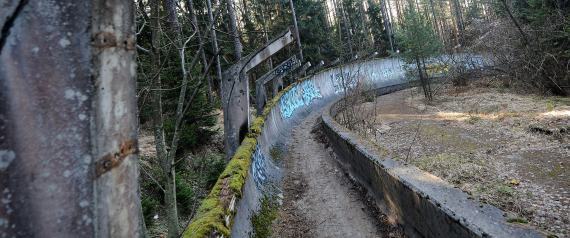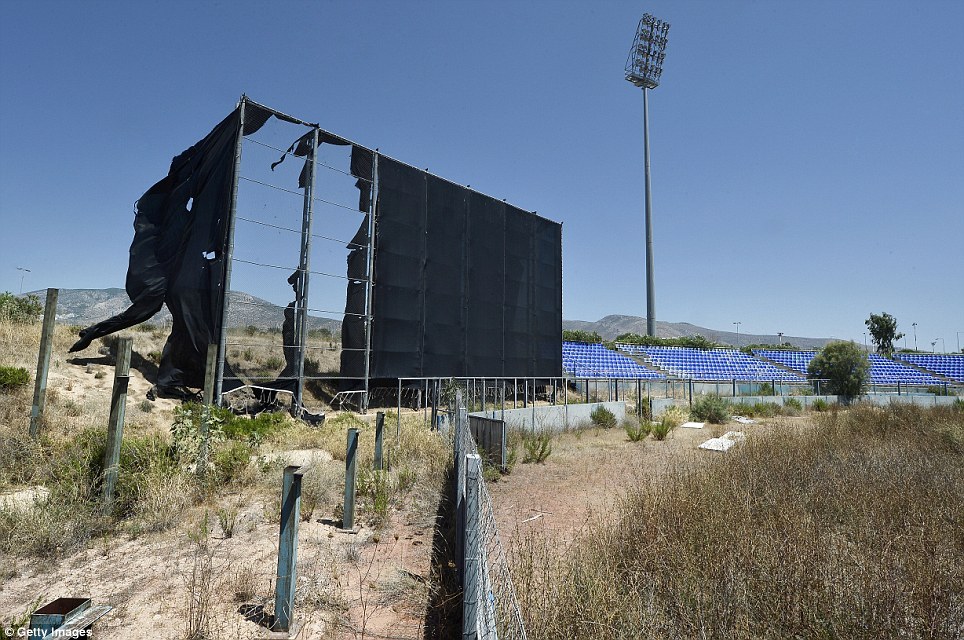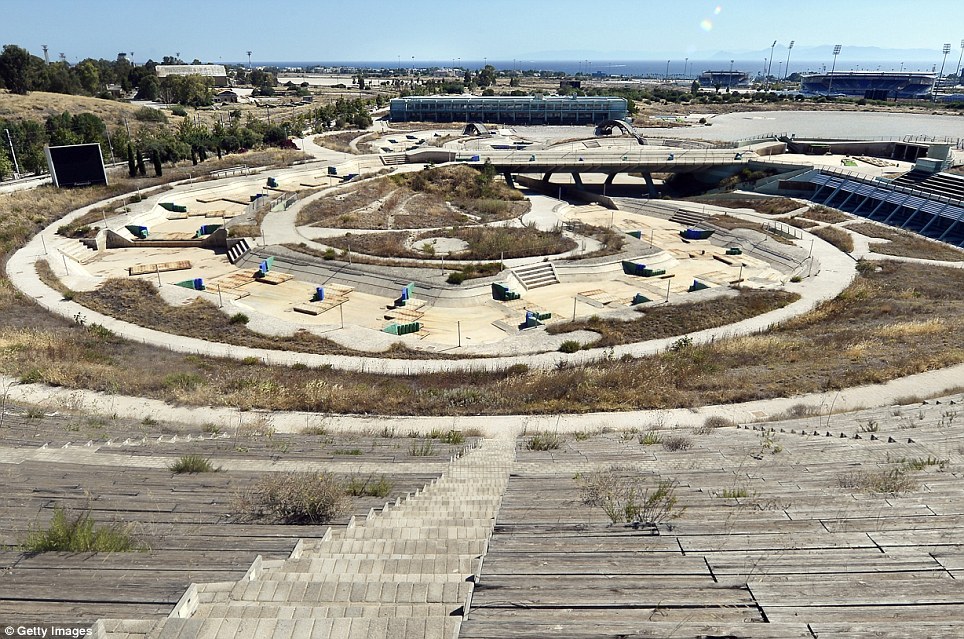Have you ever wondered what happens to the Olympic facilities after the games are finished? The findings may shock you. We don’t have to go back too far to find some serious trends occurring. Many of the Olympic facilities over the past 30 years have suffered from severe disrepair. The reasons are many ranging from:
- Poor long-term planning for the venues;
- Focus on the short term gain to hold the games;
- Recession;
- Civil unrest; and
- The fading of exports popularity1.
The poorest examples are Beijing (2008), Athens (2004) and Sarajevo (1984). Despite the above, the single biggest problem is that the cities did not have a solid business plan for after the games. While supporting infrastructure such as transportation have continued use many of the major facilities do not.

Sarajevo Bob-sleigh Track – Photo by ELVIS BARUKCIC/AFP/Getty Images
When you consider the cost of development to build the Olympic venues it is a significant cost for effectively two weeks use. The 2014 Winter Olympics in Sochi, Russia cost US$51 billion dollars.
When you consider the cost of development to build the Olympic venues it is a significant cost for effectively two weeks use. The 2014 Winter Olympics in Sochi, Russia cost US$51 billion dollars.
In Beijing, host to the 2008 Summer Games, the Chinese government struggles to fill its “Bird’s Nest” stadium, which cost $480 million to build and $11 million a year to maintain. Now seating 80,000 (after 11,000 temporary seats were removed following the 2008 Games), the site has become a tourist attraction, but lacks a regular tenant. 2
Two years after the London Olympics there had been no events held at the Olympic arena. Closer to home if we look at the Sydney Olympics the major venue holds the odd rugby and Aussie rules game although the AFL is having second thoughts over recent problems at the venue regarding footballer safety. The venue has been considered a “dogs breakfast” by AFL footballers for at least five years.
It is sad to see that nearly all of the facilities in Athens (the home of the Olympics) are in total disrepair3. The Greeks “invested” nine billion euros into new infrastructure. With the lack of maintenance, 21 of the 22 venues now lie abandoned4 and match the ancient ruins after only 10 years.
 Athens’ Baseball Stadium
Athens’ Baseball Stadium
 Kayaking and baseball stadium (background)
Kayaking and baseball stadium (background)
As good asset managers can we learn from these disasters? It is clear a robust business plan supported by a robust asset management plan is required to ensure the longevity of such facilities. While we can point the finger at the disasters we can learn from the successes.
In London the Queen Elizabeth Olympic Park is being transformed to make it more amenable for people to use it. The site will include two new schools, retail and entertainment areas, 22 miles of shared cycle and footpaths, nine miles of new roads and four miles of waterways. West Ham United will become tenants of the Olympic stadium with ongoing use planned for the remaining venues5. This is but one example with Russia, China and others looking at improving the use of existing facilities.
The IOC has some responsibility to ensure the cities bidding for the games have a sound business plan, but it is the cities themselves that need to take responsibility and stand back from the bid and honestly examine not only the cost of the games but also the cost after the games to ensure long term sustainability of the venues. If they fail to do, then maybe with rising costs the IOC should look at a different model. But that’s another story.
References:
- What happens to Olympic venues after the games? Joe Bush, Connect Sports, http://www.connectsports.com/feature/what-happens-to-olympic-venues-after-the-games/
- Abandoned Olympic Venues: What Happens After The Olympic Closing Ceremonies? The Huffington Post Canada, Feb. 21 2014 04:17 https://www.huffpost.com/archive/ca/entry/abandoned-olympic-venues-what-happens-after-the-olympic-closing_n_4825485
- What happens to Olympic venues after the torch goes out, Scott Stump and Eun Kyung Kim, Feb. 23, 2014 at 2:39 AM, http://www.today.com/news/what-happens-olympic-venues-after-torch-goes-out-2D12152101
- Mail Online, http://www.dailymail.co.uk/sport/olympics/article-2717614/Athens-Olympic-Games-venues-lie-abandoned-left-decay-ten-years-spending-7bn-welcome-Olympics-home.html.
- After The Party: What happens when the Olympics leave town, The Independent, http://www.independent.co.uk/sport/olympics/after-the-party-what-happens-when-the-olympics-leave-town-901629.html
- One year on: the transformation of London’s Olympic park, The Telegraph, http://www.telegraph.co.uk/sport/olympics/10127550/One-year-on-the-transformation-of-Londons-Olympic-park.html


